USMSFP program improves TSV resistance
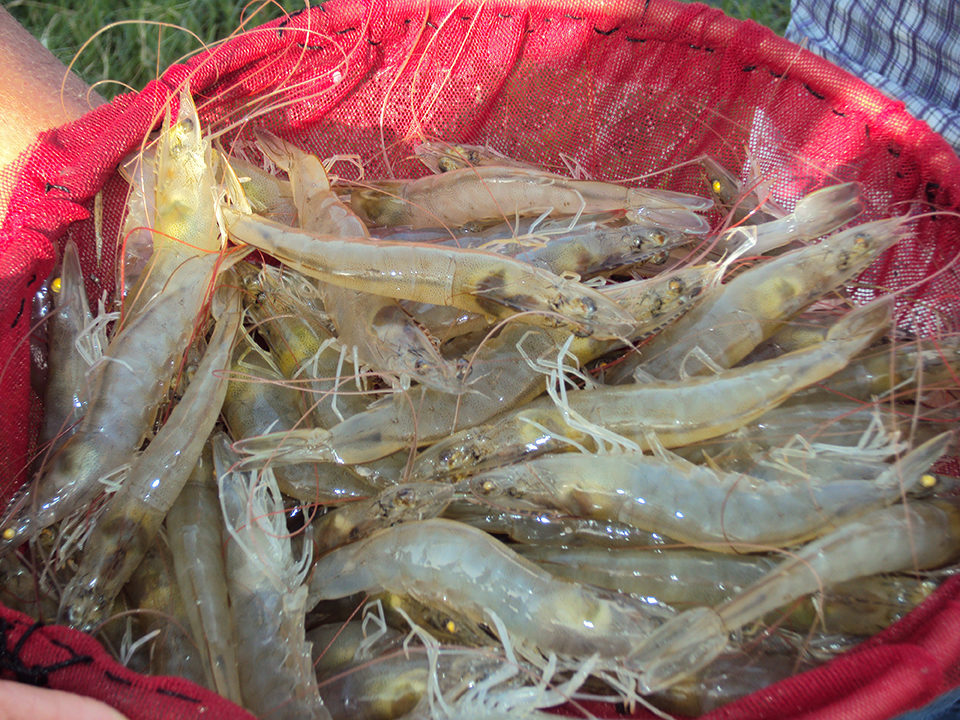
Taura syndrome, caused by Taura syndrome virus (TSV), is an economically important disease of Pacific white shrimp (Litopenaeus vannamei). TSV was first identified in Ecuador in 1992 and has since spread to the major shrimp-farming regions of the Americas and Asia. Initial outbreaks of TSV in the United States occurred in Hawaii and Florida in 1994, followed by an outbreak in Texas in 1995.
Pond mortality during early TSV outbreaks ranged from 40 to 95 percent in unselected populations of L. vannamei. The value of TSV-associated crop losses in the Americas between 1992 and 1995 was estimated at over $1 billion. While no more current published estimates of TSV-associated losses are available, frequent outbreaks throughout the Americas since 1995 and the spread of TSV to Asia have undoubtedly had an enormous economic impact on the shrimp-farming industry.
Selection for TSV resistance
In response to TSV outbreaks in the United States, the U.S. Marine Shrimp Farming Program (USMSFP), with funding from the U.S. Department of Agriculture, initiated a selective breeding program to improve TSV resistance in L. vannamei. The USMSFP breeding program is operated by the Oceanic Institute and relies exclusively on specific pathogen-free (SPF) shrimp stocks.
Selection for TSV resistance began in 1995, and each year one or two cohorts of 50 to 80 full-sib families have been evaluated in oral TSV challenges conducted at two USMSFP member institutions, University of Arizona and Gulf Coast Research Laboratory. The breeding program uses a sib-selection strategy in which the decision to cull or select a particular family is based on the phenotypic performance of the shrimp in a TSV challenge. Unexposed, SPF siblings from the best-surviving families are then used to propagate the next generation.
Genetic gain
Heritability for TSV resistance is low to moderate. Estimates from Oceanic Institute studies have typically been below 0.2, which is in agreement with published estimates for L. vannamei. Despite a low to moderate heritability, rapid improvement in TSV resistance has been made through selection, as evidenced by selection responses of 10-20 percent/generation (expressed as the relative increase in shrimp survival when challenged with TSV) during the first several years of selection.
The ability to improve TSV resistance is attributed to high phenotypic/genotypic variation for TSV survival. Having a wide range of family survivals in each cohort allows for a large selection differential and intense selection, which have resulted in higher than expected selection responses.
However, as selection has progressed, the magnitude of variation for TSV survival has declined. For example, whereas mean family survival increased from 44 to 84 percent over five generations of selection, the coefficient of variation for TSV survival decreased from 43.3 to 13.6 percent (Figs. 1 and 2).
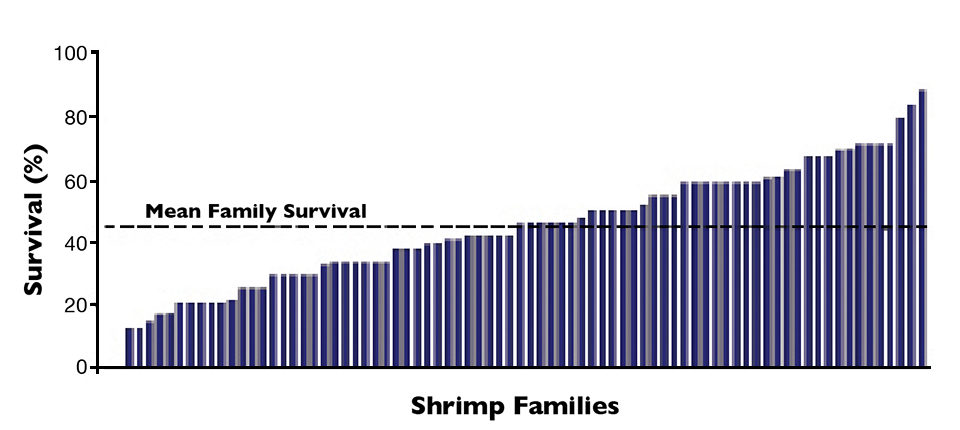
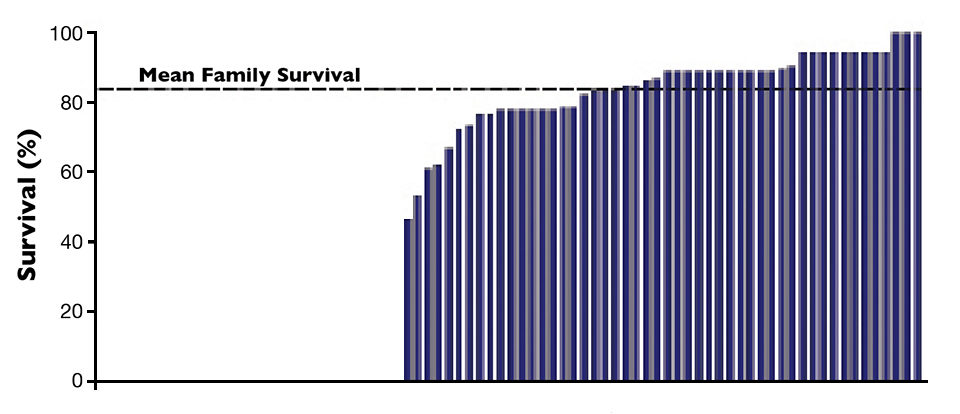
To date, 15 generations of selection have been completed, and recent cohorts have exhibited over 80 percent survival to multiple isolates of TSV, including a highly virulent isolate from Belize. In addition, several families per cohort typically exhibit 100 percent survival.
Since a high level of TSV resistance has been established in the breeding population, and only incremental improvements in survival are achievable at this point, selection efforts have shifted to maintaining TSV resistance while placing more emphasis on other economically important traits such as growth and growout survival.
Genetic correlations
Early in the breeding program, there was concern about a negative correlation between TSV resistance and growth. However, over the last several generations, phenotypic correlations between these traits typically have been low and have fluctuated from slightly positive to slightly negative (Table 1). Similar correlations between TSV survival and grow-out survival have been found.
Moss, Phenotypic correlations between TSV survival, Table 1
| Cohort | Growth (g) | Growout Survival (%) |
|---|---|---|
| 11 | -0.08 | -0.18 |
| 12 | -0.06 to 0.11 | -0.10 to 0.09 |
| 13 | -0.13 to 0.17 | -0.04 to 0.33 |
| 14 | -0.13 | 0.40 |
| 15 | 0.15 | 0 |
| 16 | 0.02 | 0.18 |
| 17 | -0.15 to -0.07 | -0.13 to -0.05 |
| 18 | -0.50 | -0.20 |
| 19 | 0.08 | 0.08 |
| 20 | 0.08 | 0.14 |
| 21 | 0.07 | -0.15 |
| 22 | 0.08 | -0.08 |
If there is a true negative genetic correlation between TSV survival and grow-out survival, it is likely weak and would not substantially hinder simultaneous genetic improvement for both traits. In fact, stocks selected for TSV resistance exhibit good growth and survival at Oceanic Institute. A recent cohort of 1.7-gram TSV-resistant shrimp was evaluated for grow-out performance at a stocking density of 363 shrimp per square meter in a recirculating raceway system. After 69 days of culture, the mean family harvest weight, weekly growth and survival were 19.3 grams, 1.8 grams and 87 percent, respectively.
More than 30 genetically distinct TSV isolates have been identified, and USMSFP stocks have been exposed to several of these isolates in challenges. Although mean cohort survival can differ among isolates, genetic correlations for survival to specific isolates have been high (> 0.7). These results suggest that isolate-specific shrimp lines do not need to be developed.
USMSFP stocks also have been challenged with white spot syndrome virus (WSSV), yellow head virus (YHV), and infectious myonecrosis virus (IMNV). Selection efforts to improve TSV resistance have not resulted in enhanced resistance to these other viral pathogens. There appears to be little phenotypic variation in survival to WSSV and YHV, as most families exhibited 100 percent mortality in oral challenges. Results from a recent IMNV injection challenge suggested there may be sufficient family variation to allow for selection. However, the phenotypic correlation between IMNV and TSV survival was low.
Inbreeding
Oceanic Institute researchers conducted a multiple-generation analysis of TSV-challenge data which revealed that inbreeding has moderate to severe effects on TSV survival. In addition, the magnitude of inbreeding depression (IBD) may be dependent on TSV virulence. Specifically, IBD estimates for Hawaii and Texas isolates of TSV were -8.3 and -11.1 percent, expressed as the percent change in phenotype per 10 percent inbreeding, respectively. However, IBD for a more virulent Belize isolate was -31.4 percent.
Industry impacts
Oceanic Institute periodically distributes TSV-resistant germplasm from the USMSFP breeding program to U.S. industry stakeholders. This germplasm typically has been in the form of postlarvae of the best-performing families from the previous generation. Over the last seven years, about 700,000 shrimp have been distributed to U.S. farmers and broodstock suppliers, along with a small number of shrimp distributed to U.S. research institutions. Descendants of TSV-resistant stocks have been shipped worldwide by U.S. broodstock suppliers, and the use of TSV-resistant stocks of L. vannamei is now common in most shrimp-farming areas of the world.
(Editor’s Note: This article was originally published in the January/February 2011 print edition of the Global Aquaculture Advocate.)
Authors
-
Dustin R. Moss, M.S.
Oceanic Institute
41-202 Kalanianaole Highway
Waimanalo, Hawaii 96795 USA[103,114,111,46,101,116,117,116,105,116,115,110,105,99,105,110,97,101,99,111,64,115,115,111,109,100]
-
Steve M. Arce
Oceanic Institute
41-202 Kalanianaole Highway
Waimanalo, Hawaii 96795 USA -
Clete A. Otoshi
Oceanic Institute
41-202 Kalanianaole Highway
Waimanalo, Hawaii 96795 USA -
Shaun M. Moss, Ph.D.
Oceanic Institute
41-202 Kalanianaole Highway
Waimanalo, Hawaii 96795 USA
Tagged With
Related Posts

Health & Welfare
A study of Zoea-2 Syndrome in hatcheries in India, part 1
Indian shrimp hatcheries have experienced larval mortality in the zoea-2 stage, with molt deterioration and resulting in heavy mortality. Authors investigated the problem holistically.
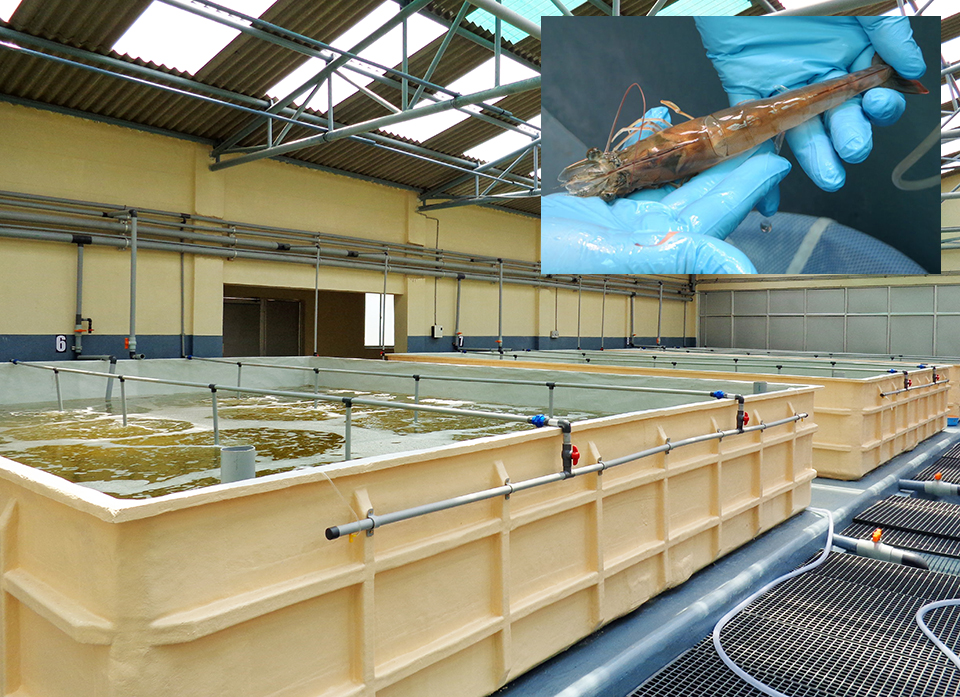
Health & Welfare
Broodstock center in India supports domestic shrimp-farming industry
The project produces specific-pathogen-free broodstock with good reproductive performance, fast growth and high survival. More than 60 hatcheries in India have received broodstock from the program.
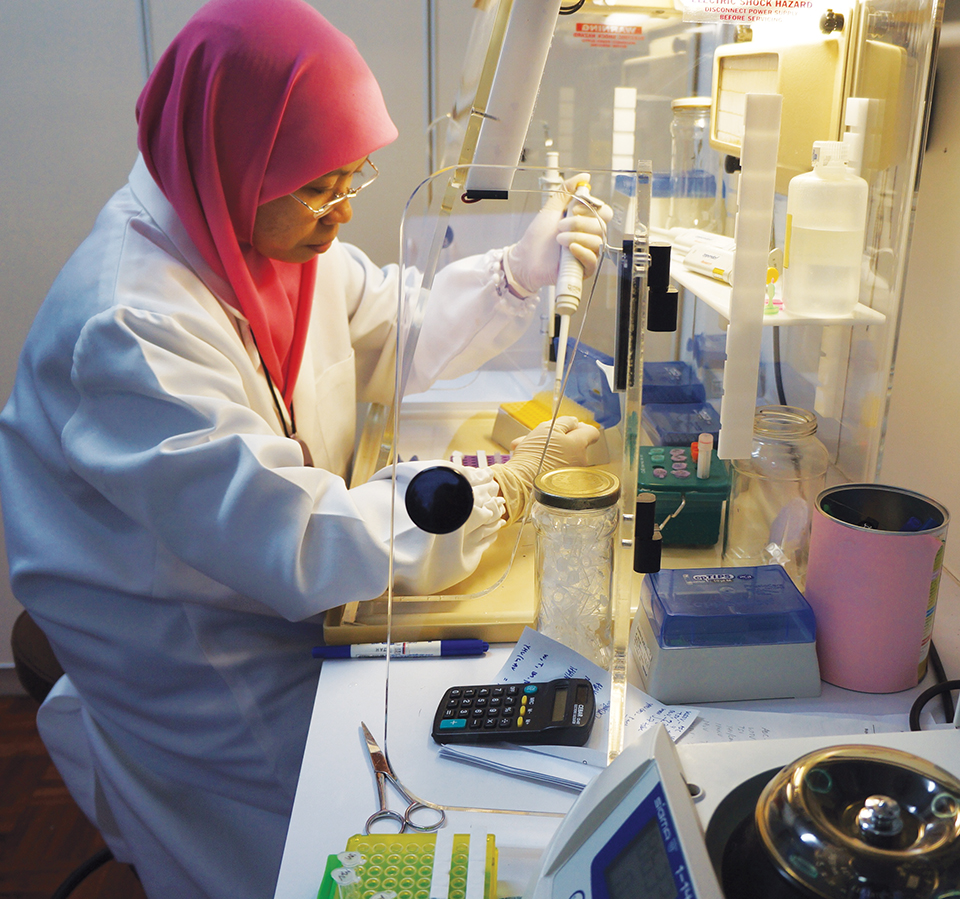
Health & Welfare
Brunei project develops technology for large black tiger shrimp production, part 2
For a five-year project undertaken in Brunei Darussalam to develop advanced technology for production of large black tiger shrimp, a comprehensive disease diagnostic laboratory was developed to enable detection of known and emerging shrimp pathogens by molecular and histological methods.
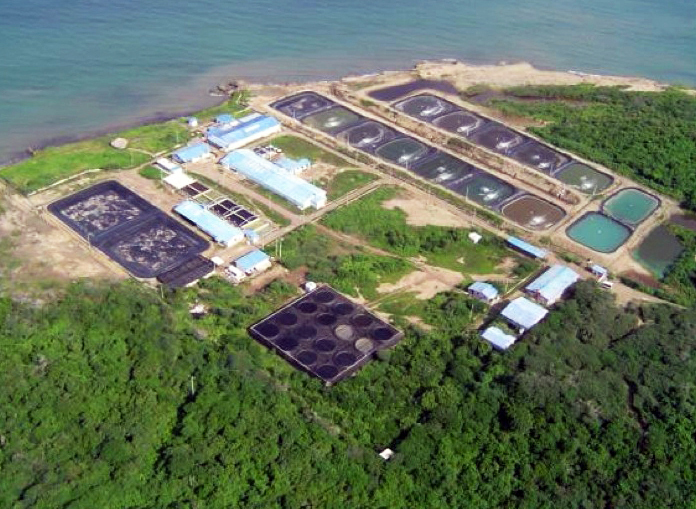
Health & Welfare
CENIACUA develops WSSV-resistant shrimp in Colombia
To combat white spot syndrome virus (WSSV) in white shrimp, Corporación Centro de Investigación de la Acuacultura de Colombia (CENIACUA) initiated a selective-breeding program to develop resistance in shrimp.


